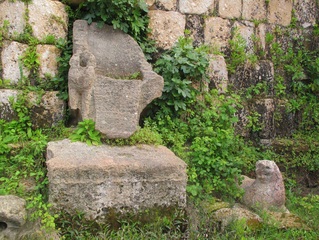
Situated about 1.5 kilometers north of Saida and along the banks of the al-Awali River, are the remains of the Phoenician temple complex of Echmoun. Given its natural environment, the area is locally known as the `Bustan al-Sheikh`, the Gardens of the Sheikh.
The top pieces of the complex are located in museums in Beirut, Paris and Istanbul. Yet, entrance is free and full exploration of the temple complex takes between 30 and 45 minutes.
Although the Echmoun Temple was constructed in the seventh century BC, many buildings, such as the Roman constructions and the Byzantine church, have been added over time. The legend behind this temple complex is about the goddess Astarte - also known as Venus and Aphrodite - falling in love with a handsome Beiruti hunter.
The hunter, not interested in her advances, cuts himself to death in order to escape from her affection. However, Astarte, still deeply enamored with him, brings the hunter back to life and turns him into a god. Known as Echmoun, the god of healing and fertility, pilgrims used to come there offering statues symbolizing their loved ones, in order to have them cured from their illness; a tradition that lasted until the third century BC. Near the temple complex, a gold plaque was found with Echmoun holding a serpentine curled around a staff. The current well-known symbol of the medical profession, a staff intertwined with two serpents, is thought to be derived from this, as well as from Asklepios, the symbol of the Greek god of the medical art. Before excavations started around 1900, the site was used as a quarry; the best example of this is the use of the temple’s massive blocks for the construction of a river bridge by Fakhr el-Dine Maan II.
To reach the temple from Saida, you can either drive there yourself or take a taxi from the Nejmeh roundabout (about 8,000 LBP).

